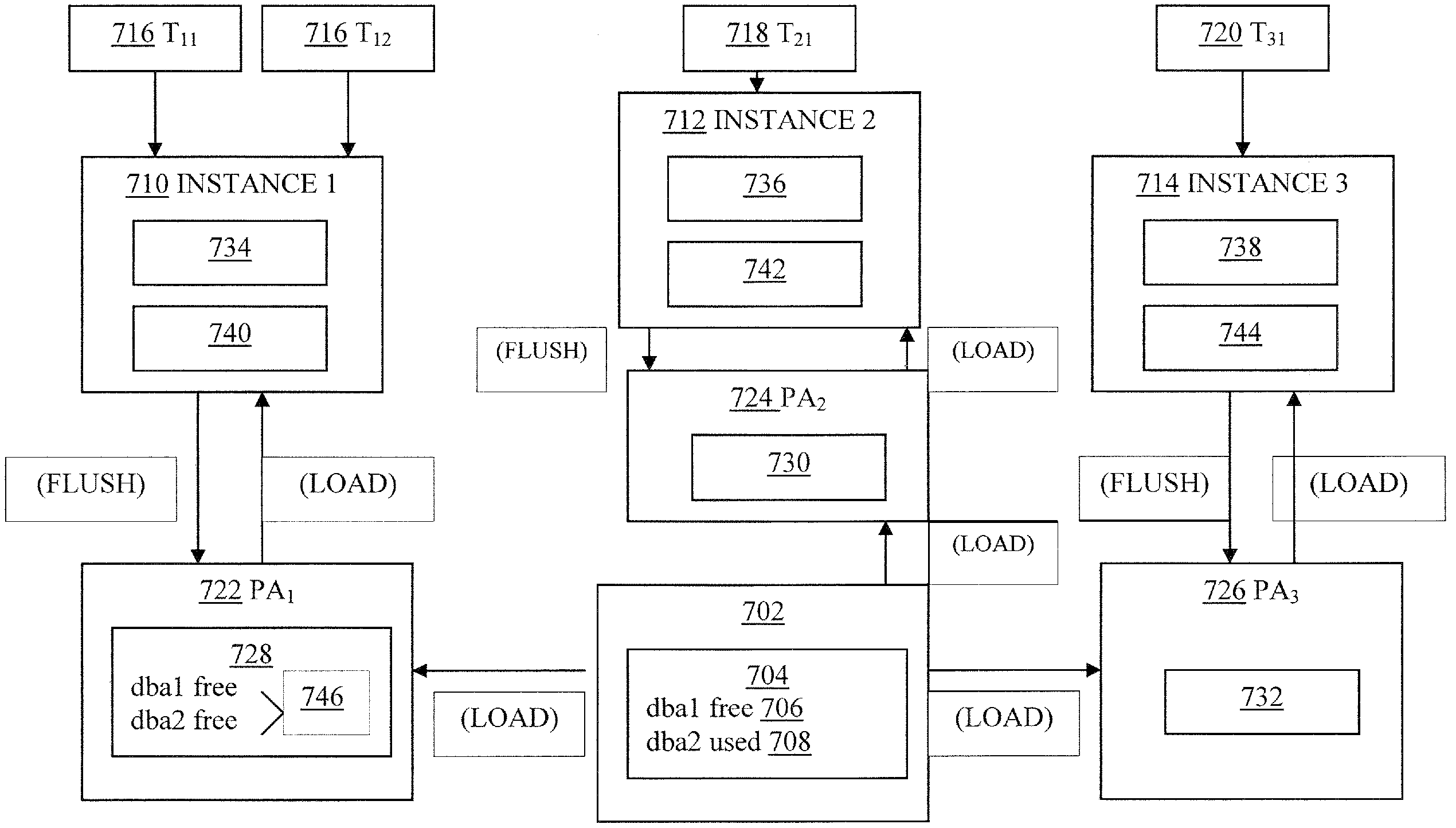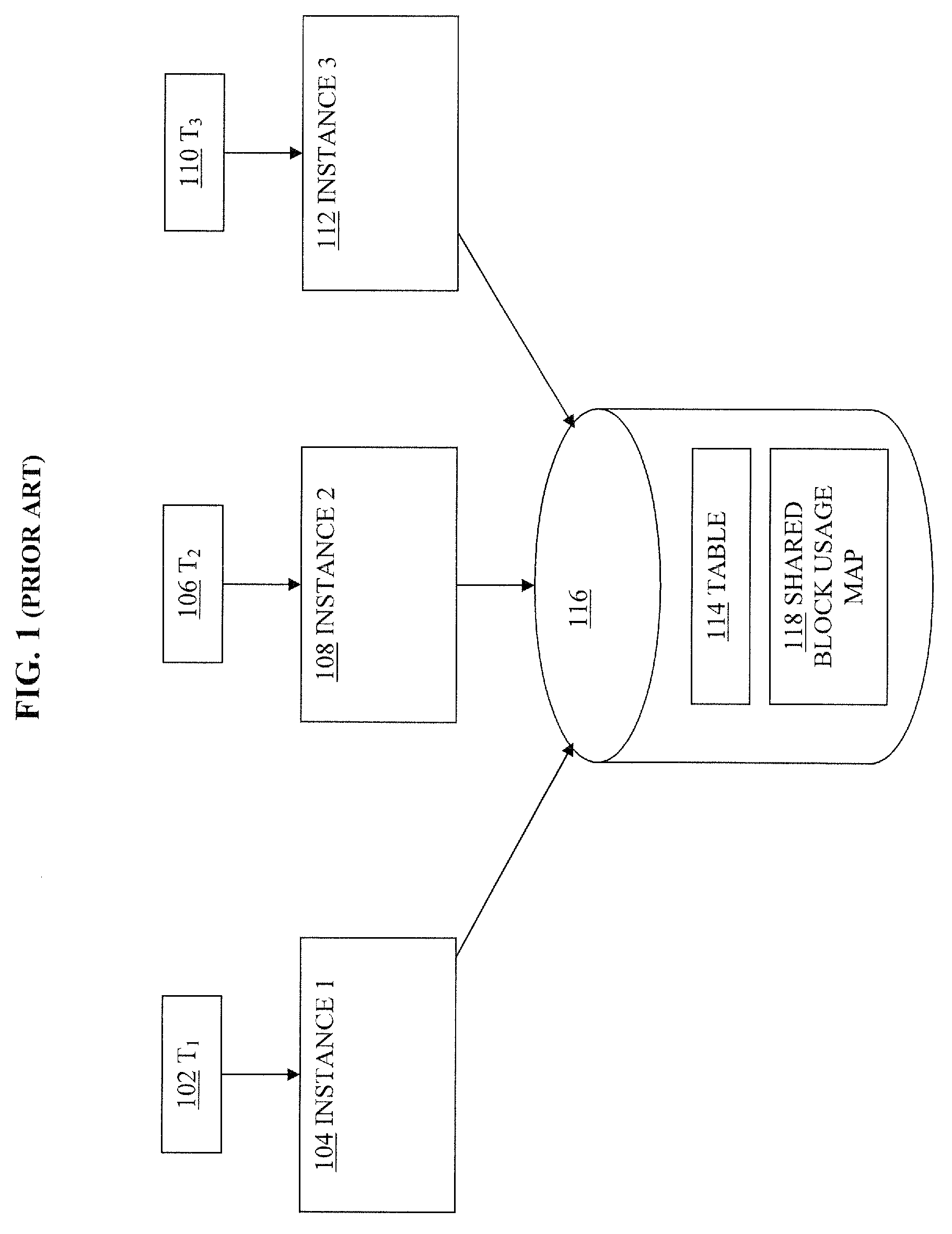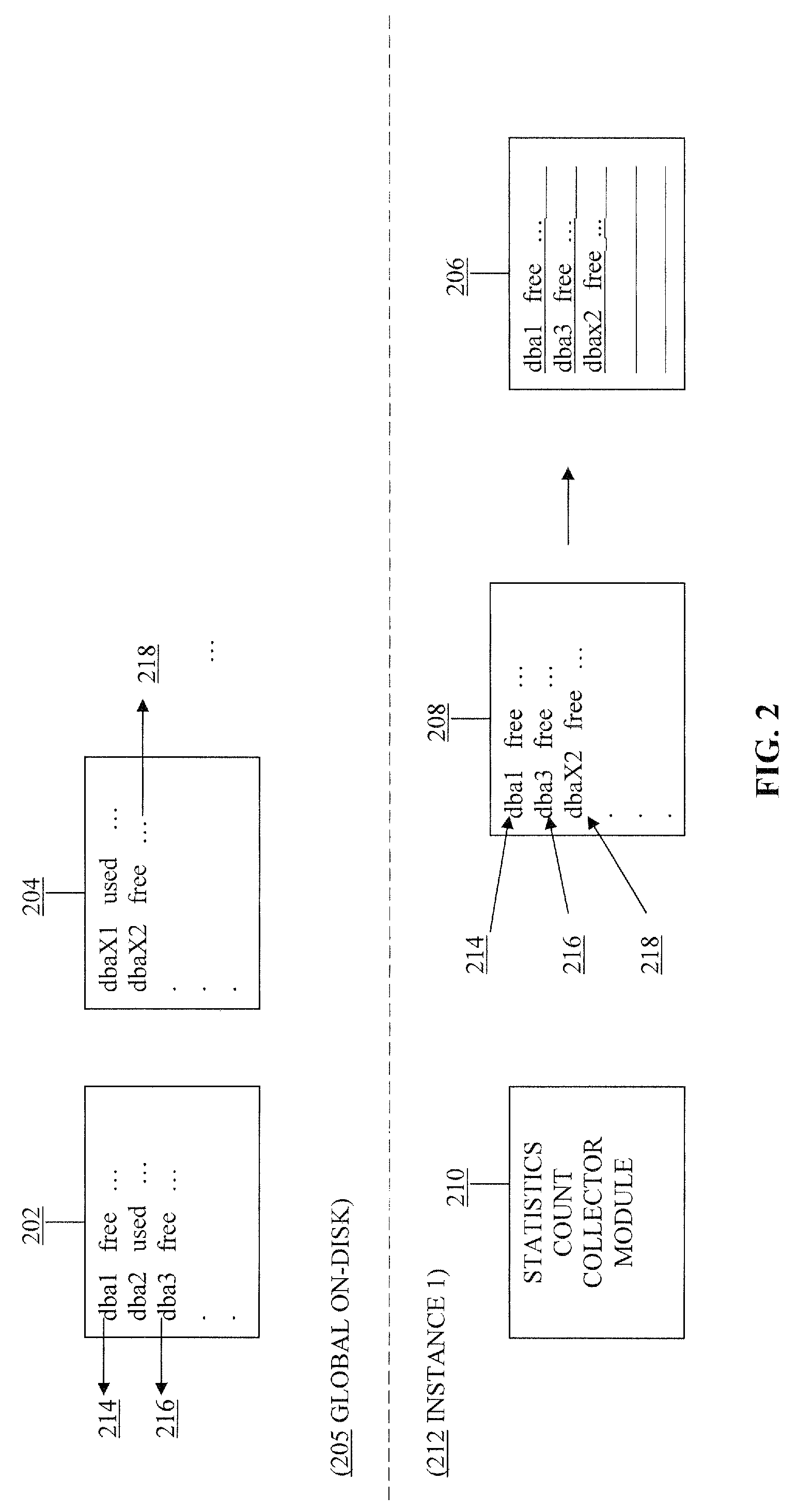In-memory space management for database systems
a database system and inmemory space technology, applied in relational databases, program control, instruments, etc., can solve the problems of generating undo for each disk block, increasing the overhead of undoing, and only being able to use one process at a tim
- Summary
- Abstract
- Description
- Claims
- Application Information
AI Technical Summary
Benefits of technology
Problems solved by technology
Method used
Image
Examples
Embodiment Construction
[0025]In the following description, for the purposes of explanation, numerous specific details are set forth in order to provide a thorough understanding of the present invention. It will be apparent, however, that the present invention may be practiced without these specific details. In other instances, well-known structures and devices are shown in block diagram form in order to avoid unnecessarily obscuring the present invention.
Multi-Tier Level Free Space Management
[0026]According to one embodiment, multiple levels of structures are used to manage free space within a multiple-instance system. Specifically, in one embodiment, free space is managed using structures at the global level, a per-instance persistent level, and a per-instance volatile level. Such an embodiment is illustrated in FIG. 2.
[0027]Referring to FIG. 2 is a schematic diagram showing two shared-block-usage maps (202 and 204). Shared-block-usage maps 202 and 204 are “global” in that they are accessible to and used...
PUM
 Login to View More
Login to View More Abstract
Description
Claims
Application Information
 Login to View More
Login to View More - R&D
- Intellectual Property
- Life Sciences
- Materials
- Tech Scout
- Unparalleled Data Quality
- Higher Quality Content
- 60% Fewer Hallucinations
Browse by: Latest US Patents, China's latest patents, Technical Efficacy Thesaurus, Application Domain, Technology Topic, Popular Technical Reports.
© 2025 PatSnap. All rights reserved.Legal|Privacy policy|Modern Slavery Act Transparency Statement|Sitemap|About US| Contact US: help@patsnap.com



